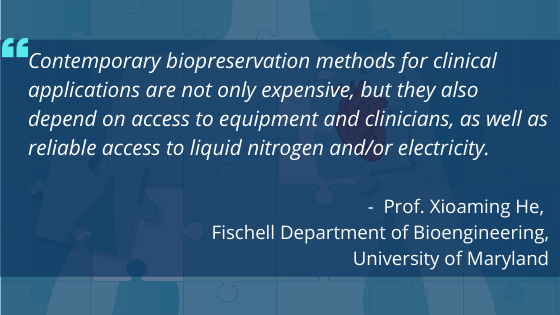The cells, tissues and organs critical to modern medicine and scientific research alike are in short supply, and the processes used to bank or preserve them are tricky and expensive. Meanwhile, the need is growing: According to the U.S. Health Resources and Services Administration, more than 106,000 men, women and children are on the U.S. national transplant waiting list.

In a recent review article in Nature Biomedical Engineering, a University of Maryland bioengineering researcher and colleagues explain how advances in microfabrication, nanofabrication, materials science, and thermal-fluid engineering can improve how cells and tissues and organs are banked or even created.
Click here to read more.
